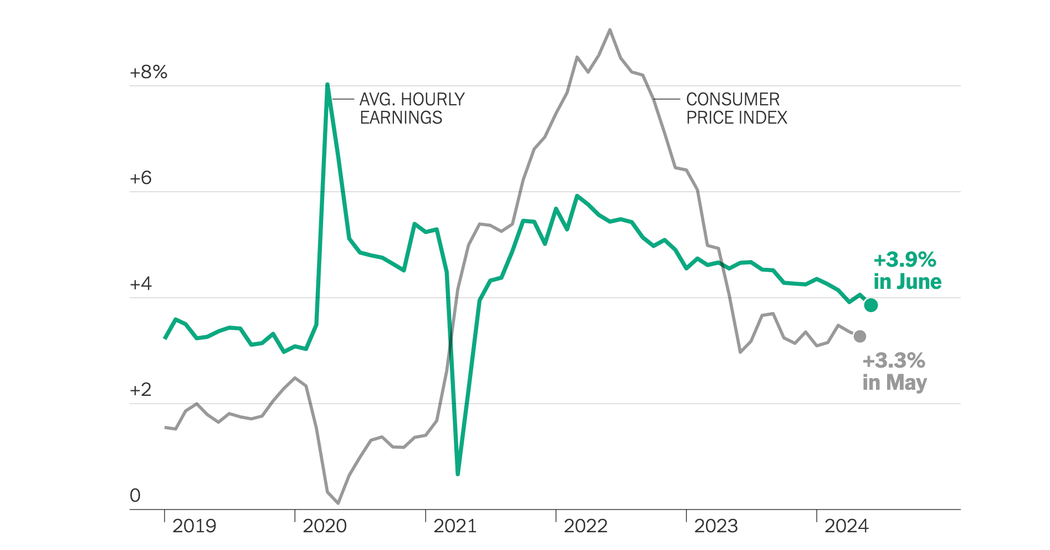A new jobs report Friday showed the unemployment rate rose in June as wage growth cooled, signs that the labor market continued to moderate after years of remarkable strength. That could keep Federal Reserve officials on guard as they watch for signs that the labor market is on the verge of bursting.
Fed policymakers have two primary goals: to achieve low, stable inflation and a strong labor market. They try to do this by fixing interest rates, either keeping them low to stimulate the economy or raising them to high levels to depress growth.
Since early 2022, Fed officials have been using higher rates to combat rapid inflation, focusing more on taming price increases than on the employment side of their mandate. But inflation is now cooling significantly, and keeping the labor market strong has become a major priority for central bankers again.
That's why the jobs report released on Friday could be a warning sign.
Unemployment has been rising steadily over the past year, with June’s 4.1 percent up from 3.6 percent a year earlier. The rate measures people who are actively looking for work but struggling to find it, so trends suggest it’s not as easy to find a job as it was a year ago.
That’s not a huge surprise, based on other data. Job postings have fallen sharply after a spike in the wake of coronavirus lockdowns. Wage growth has been muted, a sign that employers are no longer paying so generously to lure new workers — average hourly earnings rose 3.9 percent from a year earlier in the June data, still solid by historical standards but the weakest reading in years.
All of this means that the labor market is on the verge of cooling even more drastically.
Fed officials have made clear that a sudden and dramatic weakening of the labor market could prompt them to cut rates. The slowdown underway probably doesn’t meet that standard, but combined with cooling inflation, economists and investors increasingly believe the labor market’s moderation could pave the way for a rate cut as early as September.
Investors, who generally favor lower interest rates, pushed stock prices up slightly in early trading on Friday.
Wall Street had already been betting that the Fed would begin cutting rates in September. Data released Friday confirmed those expectations, with two quarter-point cuts now fully priced in this year.

